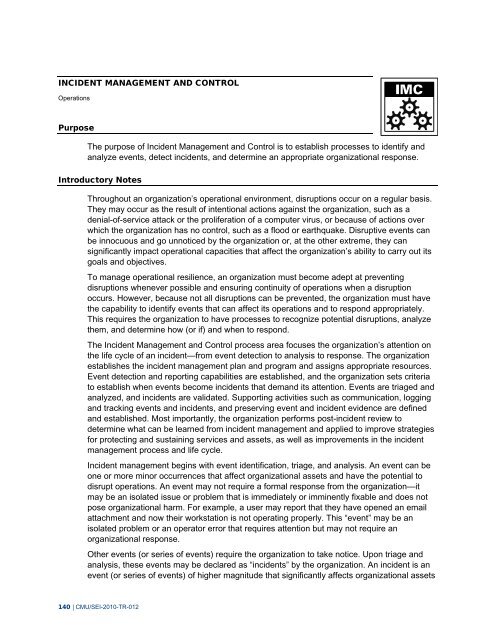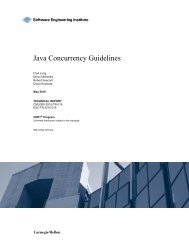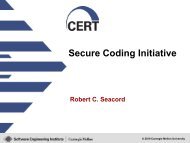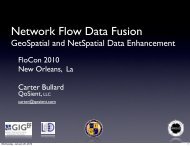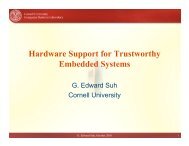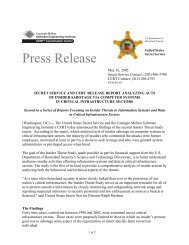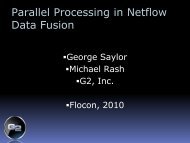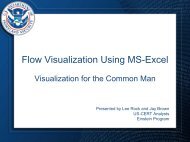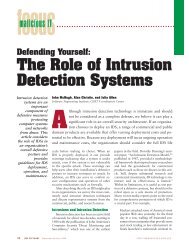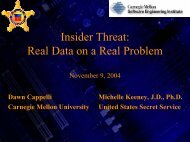CERT Resilience Management Model, Version 1.0
CERT Resilience Management Model, Version 1.0
CERT Resilience Management Model, Version 1.0
- No tags were found...
You also want an ePaper? Increase the reach of your titles
YUMPU automatically turns print PDFs into web optimized ePapers that Google loves.
INCIDENT MANAGEMENT AND CONTROLOperationsPurposeThe purpose of Incident <strong>Management</strong> and Control is to establish processes to identify andanalyze events, detect incidents, and determine an appropriate organizational response.Introductory NotesThroughout an organization’s operational environment, disruptions occur on a regular basis.They may occur as the result of intentional actions against the organization, such as adenial-of-service attack or the proliferation of a computer virus, or because of actions overwhich the organization has no control, such as a flood or earthquake. Disruptive events canbe innocuous and go unnoticed by the organization or, at the other extreme, they cansignificantly impact operational capacities that affect the organization’s ability to carry out itsgoals and objectives.To manage operational resilience, an organization must become adept at preventingdisruptions whenever possible and ensuring continuity of operations when a disruptionoccurs. However, because not all disruptions can be prevented, the organization must havethe capability to identify events that can affect its operations and to respond appropriately.This requires the organization to have processes to recognize potential disruptions, analyzethem, and determine how (or if) and when to respond.The Incident <strong>Management</strong> and Control process area focuses the organization’s attention onthe life cycle of an incident—from event detection to analysis to response. The organizationestablishes the incident management plan and program and assigns appropriate resources.Event detection and reporting capabilities are established, and the organization sets criteriato establish when events become incidents that demand its attention. Events are triaged andanalyzed, and incidents are validated. Supporting activities such as communication, loggingand tracking events and incidents, and preserving event and incident evidence are definedand established. Most importantly, the organization performs post-incident review todetermine what can be learned from incident management and applied to improve strategiesfor protecting and sustaining services and assets, as well as improvements in the incidentmanagement process and life cycle.Incident management begins with event identification, triage, and analysis. An event can beone or more minor occurrences that affect organizational assets and have the potential todisrupt operations. An event may not require a formal response from the organization—itmay be an isolated issue or problem that is immediately or imminently fixable and does notpose organizational harm. For example, a user may report that they have opened an emailattachment and now their workstation is not operating properly. This “event” may be anisolated problem or an operator error that requires attention but may not require anorganizational response.Other events (or series of events) require the organization to take notice. Upon triage andanalysis, these events may be declared as “incidents” by the organization. An incident is anevent (or series of events) of higher magnitude that significantly affects organizational assets140 | CMU/SEI-2010-TR-012


